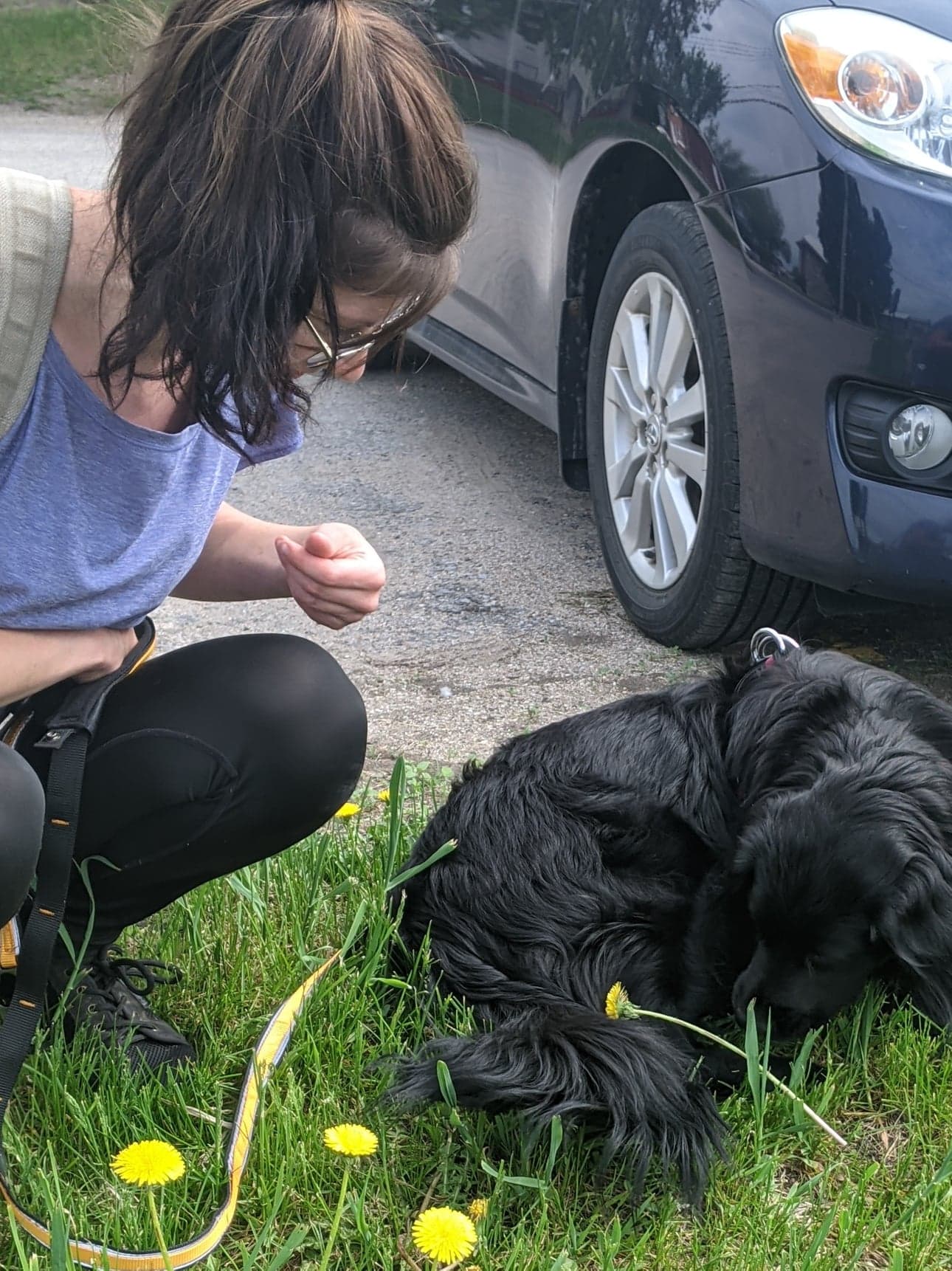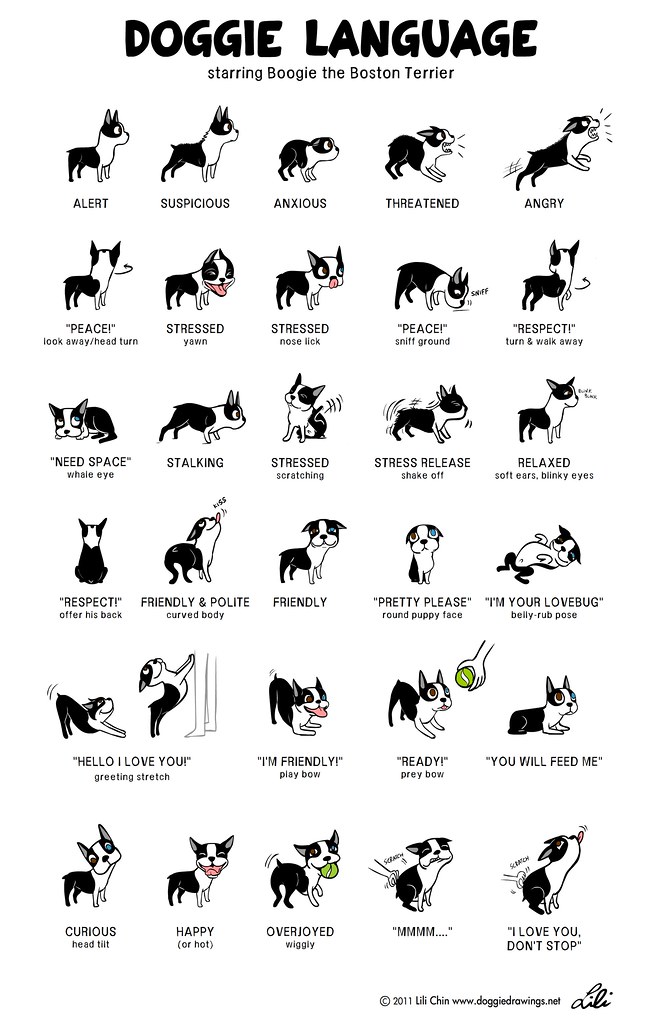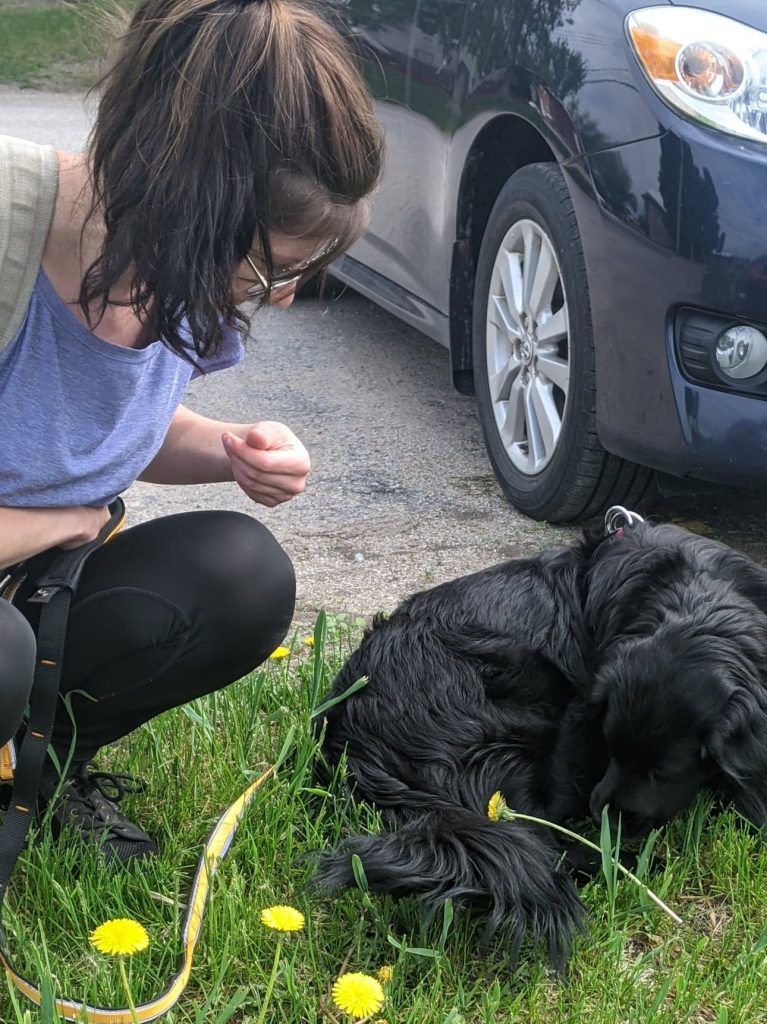Fearful, nervous, and anxious dogs have a special place in my heart, but they can be such a handful for their humans; whether their anxiety presents as aggression, a need to flee and hide from everything, separation anxiety making leaving the home every single day a stressful experience, they’re a challenge to live with peacefully.
As a trainer, it can be hard to give good universal advice because how I approach a dog with separation anxiety is very different from how I approach a dog with reactivity to other dogs, which is again different from how I approach a human aggressive dog, so a lot of training is specific on a case by case basis; though, with some overlap, certainly.
That said, there are some things that everyone who has an anxious dog can safely try – regardless how that anxiety presents itself – that will hopefully help, but at the very least can’t hurt.
Learn Dog Body Language
This point is huge. It is the most important thing, in my opinion, that any dog owner can do for their dog. If you become an expert in dog body language, you will be able to gauge your dog’s comfort levels at any given moment before their anxiety escalates to a level which is dangerous to themselves or others. Learning early warning signs and context cues is the best way to learn how to have a conversation with your dog about how they’re feeling.
I’ve done a whole bunch of instagram posts using #instadogtrainingtips talking about what to watch for, displacement behaviours, and body language, along with visual aids for those of you who are visual learners. I also cannot recommend enough Lili Chin’s book Doggie Language which is only like $12, great for kids and adults alike, and such a good learning tool.
I am a huge advocate that learning dog body language prevents dog bites and literally saves lives.
Know When to Get the Heck Out of Dodge
Hopefully you are working through some training – again, varying depending on your dog, but a mix of counterconditioning and desensitization with a good force free trainer is probably a start – but, and this is important, training must happen at a level where your dog is comfortable. If your dog is having a meltdown/panic attack – whatever this looks like in your dog’s case: barking and lunging, urinating, running away, self harming – that is not the moment to train. You aren’t going to get anywhere working through that. You’re flooding your dog and more likely to make their anxiety worse rather than better.
Ideally, of course, you never let your dog get to that point. But, life happens. Sometimes things are unavoidable. So when it does, do whatever you have to do to get your dog out of that situation – turn and run away, throw a bunch of treats on the ground, pick your pup up and leave, just get the heck out of dodge.
Avoid Trigger Stacking
The video explains it better than I ever could, but the bottom line is this: one stressful thing, we can maybe deal with. But more and more stressful things mean at some point there will be a straw that breaks the camel’s back and it is all just too much. So, practice working through your dog’s triggers in moderation. Take breaks. Be aware when something is stressful to them (this goes back to learning body language!). Take days off. Let them relax.
Try Over the Counter Anxiety Aids
There is a place in behaviour modification with anxious dogs for pharmaceuticals, but it certainly isn’t universal; it is a conversation with your dog’s wellness team – meaning owner, trainer, vet, vet behaviourist, etc. – whether that is a good idea and in what form.
Over the counter aids can be a great thing to try before you escalate to that, though. With the OTC stuff, I tend to lean on a (as long as it isn’t potentially harmful) throw it all at the wall and see what sticks kind of attitude.
Here are a few that I’ve seen most success with:
- Adaptil (often shortened to DAP as it used to be called “Dog Appeasing Pheromone”) is a pheromone that is meant to help calm dogs. Depending what is causing your dog’s anxiety, they have different methods of delivery; one is a wall plug-in (think: Febreze diffuser) which I typically recommend for separation anxiety type dogs, one is a spray you can spray on a dog bed or in a car, for example, and one is a collar the dog can wear. This is my favourite OTC aid and the one I typically see the most success with. It is also pretty affordable so well worth a shot.
- A-OK9‘s “Calm-K9” is a food supplement to help with calming, made by the amazing folks at Absolute Dogs. It is fairly new to the market and a bit pricey, so I haven’t tried it yet, but it has been getting some wonderful reviews and seems to have some evidence based research behind it.
- Melatonin. This is one that is worth running by your vet first, especially if your dog is on other medications that it may potentially interact with. However, it is being used as a sleep and behavioural aid in dogs; there isn’t a ton of research on it yet, but anecdotally it seems to be helpful and harmless.
- Physical aids. What this looks like will depend on the cause and presentation of your dog’s anxiety, but as an example, for a dog with separation anxiety I might try a snuggle puppy, whereas for a dog who is anxious during car rides I might try a ThunderCap or ThunderShirt.
Comfort Your Dog
Hopefully this is intuitive for a lot of you; however, it deserves a mention. There is a myth that used to circle around a lot that if you comfort your dog when they’re feeling anxious, you will be reinforcing their anxiety. If you’ve heard that myth and if you are worried about it, here is your official, professional blessing: it is a myth. Please comfort your dog if they are stressed or panicking.
When that comfort looks like depends on what is comforting to your dog specifically. Treats perhaps? Though stressed dogs often won’t eat. Petting, or just a comforting hand on their back? Soothing words in a soft tone of voice? Smile and make gentle, soft eye contact with them? Whatever comfort is for your dog, go ahead and do it.
Look at it this way: if I am having a panic attack, which will be more helpful to me? A loved one stroking my back and reminding me to breathe, or them telling me to just toughen up?
So, give your anxious pups a treat and a scratch behind the ears for me, and happy training out there. The world can seem pretty scary to our dogs sometimes, but we can help them make it a little less so with some effort, a sense of safety, and love.
Note: some of the links in this post are affiliate links, so I may make a small commission. Please trust I wouldn’t recommend them if I didn’t use them myself and truly love them.



